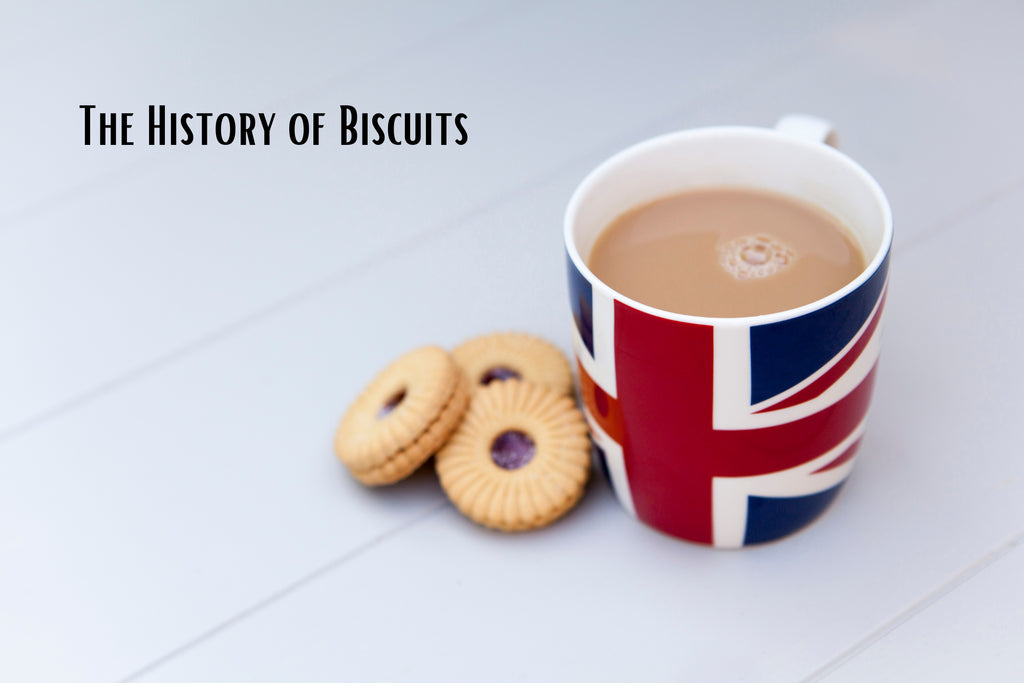A History of Biscuits - A Crunchy Tale
Posted by MARY C

Biscuits! The ultimate campion to a great cup of tea, a perfect snack to munch on, and a delightful indulgence on a lazy afternoon.
But have you ever wondered where they came from? When was the first biscuit made? How did they become so popular in the UK? Who created the mass production of biscuits? And, why are they called biscuits in the UK and cookies in the US?
Well, sit tight, and let's take a trip down the history lane of biscuits.

You can trace some of the first biscuits back to ancient Egyptian times, where they used a simple mixture of flour and water, which was to where they were used as a source of sustenance for travellers embarking on long journeys
These early biscuits were hard, flat, and baked multiple times to ensure they lasted longer. The ancient Romans also had a love for biscuits, which they called "bis coctus," meaning twice-cooked. In today's terms, we would call them "Rusks" which was bread re-baked to make them crisp. Biscuits were not only used as a food source but also as a form of payment to soldiers.
It wasn't until the Middle Ages in Europe that biscuits started to resemble the ones we know and love today. They were savoury and sweet biscuits. The English created a type of biscuit called "hardtack," which was made from flour, water, and salt, and was a staple food source for sailors on long voyages. The biscuits were so hard that they required soaking in water or tea before being consumed. Wafer biscuits started to emerge and grew in popularity, these were made of a sweetened batter and cooked over a fire. The famous 'Jumble Biscuit' also appeared in the Medieval period, traditionally shaped in a knot pattern and flavoured with much prized spices like caraway, aniseed and mace
The popularity of biscuits continued to grow, and by the 17th century, biscuits were considered a luxury item and were enjoyed by the aristocracy. During this time, the French created a type of biscuit called "sablé," which is still enjoyed today and is a staple of French cuisine.
So, now we know where biscuits come from and their early history, but why are they so popular in the UK, and how did they become mass-produced?
Well, during the 19th century, the UK had a love affair with tea, which became a popular beverage across all social classes. As tea became more popular, so did the tradition of serving biscuits alongside it. This tradition continues to this day and is a staple of British culture.
As for the mass production of biscuits, this can be credited to a man named Huntley & Palmer, who in the mid-19th century, revolutionised the biscuit-making industry.
They developed a system of using steam-powered machinery to produce biscuits on a large scale, making them more affordable and accessible to the general public. By the end of the 19th century, biscuits had become a staple food item in the UK, and the country was home to hundreds of biscuit-making factories.
Today, the biggest company supplying biscuits in the UK is McVitie's, which is known for its digestive biscuits, hobnobs, and Jaffa Cakes. There are also UK manufacturers Border Biscuits that are gaining market share.
So, why are they called biscuits in the UK and cookies in the US? Well, this comes down to a difference in language. In the UK, a biscuit refers to a small, crisp, and savoury baked good, while in the US, a cookie refers to a soft and sweet baked good. However, there are some exceptions to this rule, and the terms are often used interchangeably in both countries.
Biscuits have a rich and fascinating history that dates back thousands of years. From their humble beginnings as a source of sustenance to their evolution into a luxury item and mass-produced snack, biscuits have become an integral part of many cultures around the world. And who can blame us? There's nothing quite like dipping a biscuit into a cup of tea and enjoying the simple pleasures of life.

